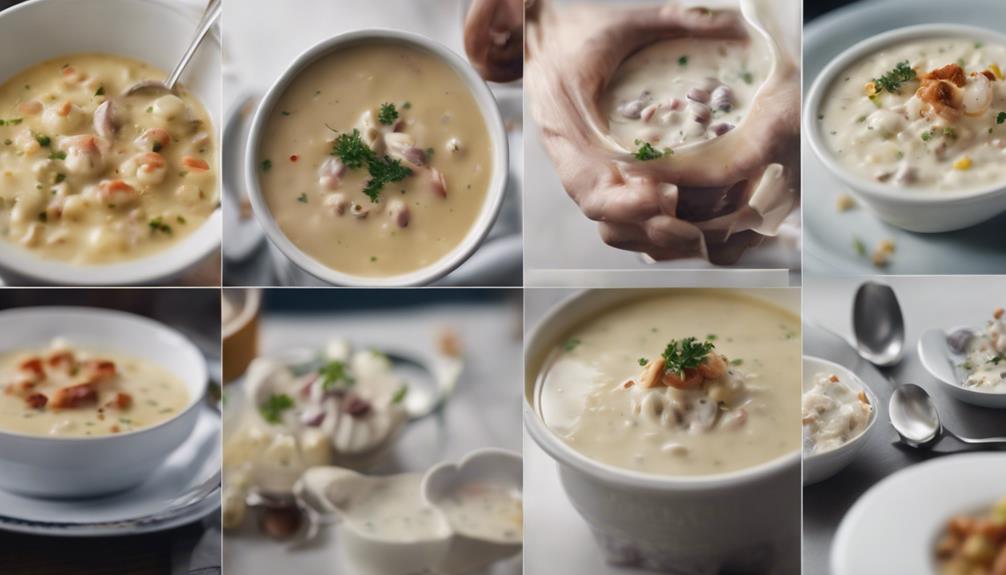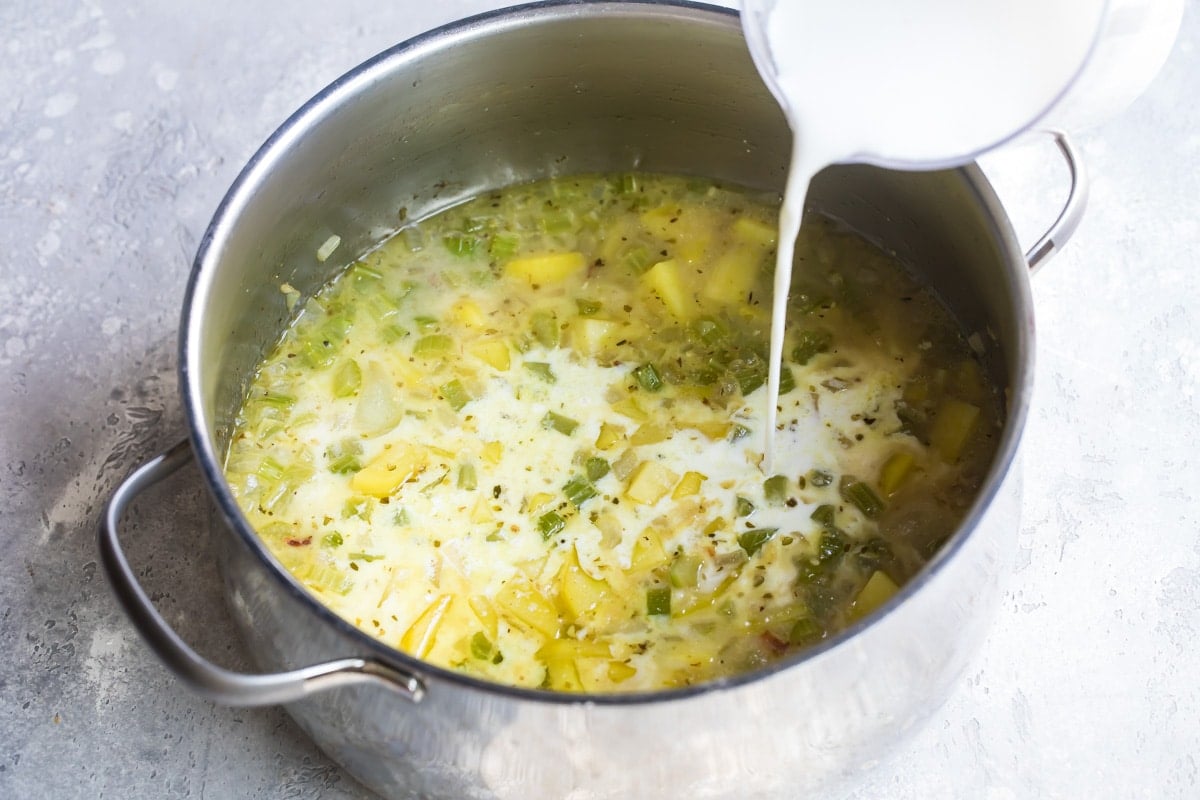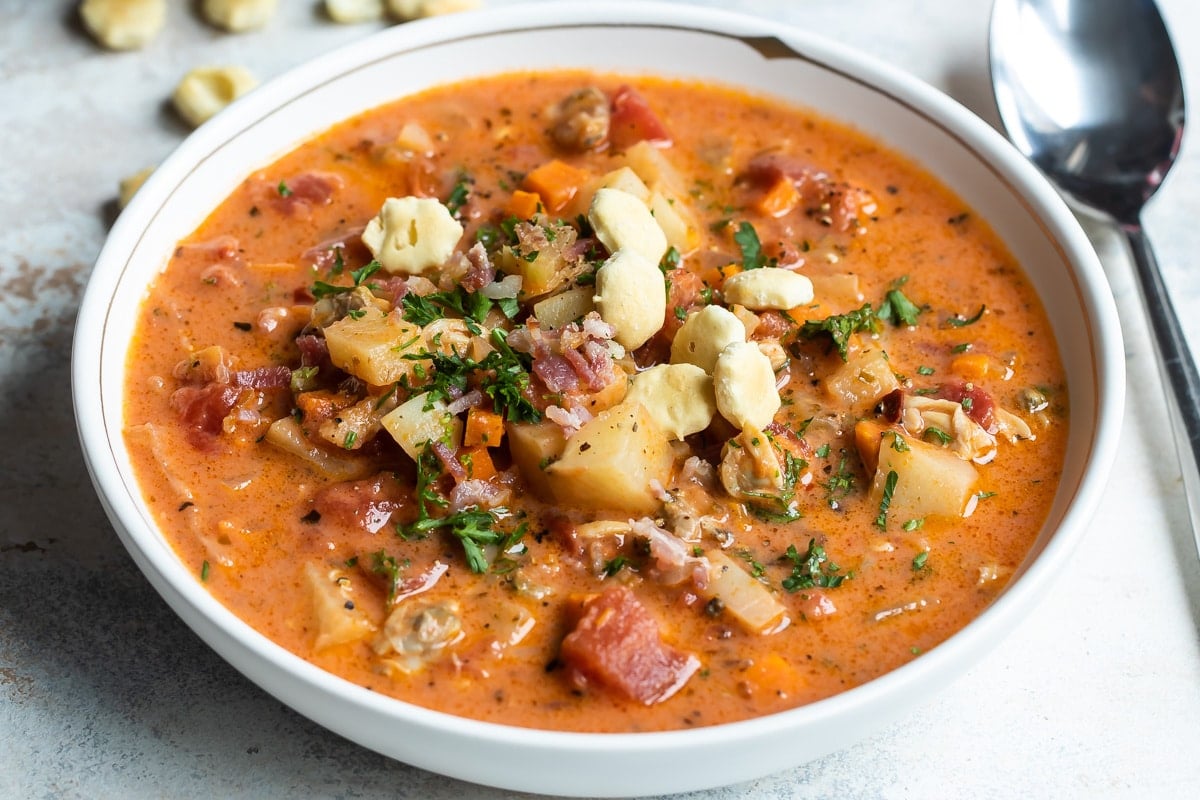Video tentang A Deep Dive into Clam Chowder: From Humble Beginnings to Culinary Icon
A Deep Dive into Clam Chowder: From Humble Beginnings to Culinary Icon

Clam chowder. The very name conjures images of cozy New England kitchens, bustling seaside restaurants, and the comforting aroma of creamy, salty goodness. This seemingly simple soup, a cornerstone of American cuisine, boasts a rich history, regional variations, and a dedicated following that spans generations. More than just a dish, clam chowder is a cultural touchstone, reflecting the ingenuity and resourcefulness of coastal communities and their enduring relationship with the sea.
A History Steeped in the Sea:
The origins of clam chowder are shrouded in the mists of time, but its development is inextricably linked to the early settlers of New England. Long before commercially produced clam chowder graced supermarket shelves, indigenous populations harvested clams and other shellfish, incorporating them into their own unique stews and broths. These early preparations likely served as the foundation for the chowder we know today.
The arrival of European settlers introduced new ingredients and culinary techniques, gradually shaping the dish into its recognizable form. Early recipes often featured simple ingredients: clams, salt pork or bacon, onions, and water or milk. The use of salt pork, a common preservation method at the time, added both flavor and a necessary richness to the relatively thin broth. These early versions were likely quite different from the creamy, decadent chowders we enjoy today.
The evolution of clam chowder was a gradual process, influenced by the availability of ingredients, evolving culinary practices, and the preferences of individual cooks. The introduction of potatoes, a staple crop in the New World, significantly altered the texture and substance of the chowder, adding a comforting heartiness to the dish. The use of cream, a later addition, transformed the soup into the richer, more luxurious version that is often associated with New England today.
The Great Chowder Debate: Manhattan vs. New England
One of the most enduring aspects of clam chowder’s legacy is the ongoing debate surrounding its two most prominent styles: Manhattan and New England. This seemingly simple distinction—the presence or absence of cream—has sparked countless culinary arguments and fierce regional loyalties.
New England Clam Chowder: The quintessential New England clam chowder is characterized by its creamy, thick consistency. This richness is achieved through the addition of cream, often heavy cream, which lends a luxurious texture and a subtly sweet flavor. The clams themselves are typically chopped or shucked, contributing their briny essence to the overall flavor profile. Potatoes are a key ingredient, adding body and substance to the soup. Other common additions include onions, celery, butter, and a touch of thyme or other herbs. The texture is often described as "chunky," a testament to the generous inclusion of potatoes and clams.
Manhattan Clam Chowder: In stark contrast to its creamy counterpart, Manhattan clam chowder is a thinner, tomato-based soup. The vibrant red color, derived from tomatoes, is a defining characteristic, setting it apart from its New England sibling. While still featuring clams, often in smaller pieces, the tomato base provides a distinctly different flavor profile, leaning towards a more acidic and savory taste. The absence of cream gives it a lighter, less decadent feel. Common additions include onions, celery, and often a touch of white wine or sherry to enhance the overall flavor complexity.
The differences between these two styles extend beyond mere ingredients. They represent distinct culinary philosophies and regional identities. New England chowder embodies the rustic charm and hearty simplicity of the region, while Manhattan chowder reflects a more refined, sophisticated approach, perhaps influenced by the city’s diverse culinary landscape.

Beyond the Basics: Regional Variations and Modern Interpretations
While New England and Manhattan styles dominate the clam chowder landscape, regional variations and modern interpretations continue to emerge, showcasing the dish’s adaptability and enduring popularity. Some variations incorporate different types of clams, such as littleneck or cherrystone clams, each lending a unique flavor profile. Others experiment with different types of cream, or incorporate alternative dairy products like coconut milk for a vegan twist.
The use of spices and herbs can also significantly impact the flavor profile. Some cooks prefer a subtle herbal note, while others opt for a bolder, more assertive seasoning. The addition of bacon or ham can add a smoky depth, while a touch of Worcestershire sauce can impart a savory umami note. The possibilities are virtually endless, reflecting the creativity and innovation within the culinary world.
The Art of Making Clam Chowder:
Creating a truly exceptional clam chowder requires attention to detail and a respect for the ingredients. The quality of the clams is paramount, as their freshness directly impacts the overall flavor of the soup. Using fresh, high-quality clams ensures a briny, sweet flavor that elevates the entire dish.

The proper preparation of the clams is also crucial. Many recipes call for steaming or simmering the clams until they open, ensuring that they are fully cooked and releasing their flavorful juices into the broth. Discarding any clams that fail to open is essential for food safety.
The technique of building flavor is also important. Sautéing the aromatics—onions, celery, garlic—before adding the other ingredients allows for a deeper, more complex flavor development. The slow simmering of the soup allows the flavors to meld and deepen, resulting in a more harmonious and satisfying taste.
Clam Chowder Beyond the Bowl:
Clam chowder’s versatility extends beyond its traditional soup form. It can be used as a filling for baked potatoes, stuffed clams, or even incorporated into other dishes such as quiche or frittatas. Its creamy texture and rich flavor make it a surprisingly adaptable ingredient, showcasing its culinary potential beyond its classic presentation.
Conclusion:

Clam chowder, a seemingly simple dish, holds a significant place in American culinary history and culture. Its evolution from humble beginnings to a culinary icon reflects the ingenuity and resourcefulness of coastal communities and the enduring power of simple, yet deeply satisfying, food. Whether you prefer the creamy richness of New England chowder or the vibrant tang of Manhattan chowder, one thing remains certain: clam chowder continues to evoke a sense of warmth, comfort, and a connection to the sea. Its enduring popularity is a testament to its timeless appeal and its ability to transcend regional boundaries, uniting people through a shared appreciation for this classic American comfort food. The ongoing debate surrounding its various styles only serves to highlight its enduring relevance and its capacity to spark conversation and culinary creativity for generations to come.

Penutup
Therefore, we hope this article has provided valuable insights on A Deep Dive into Clam Chowder: From Humble Beginnings to Culinary Icon. We hope you found this article informative and helpful. See you in our next article!

